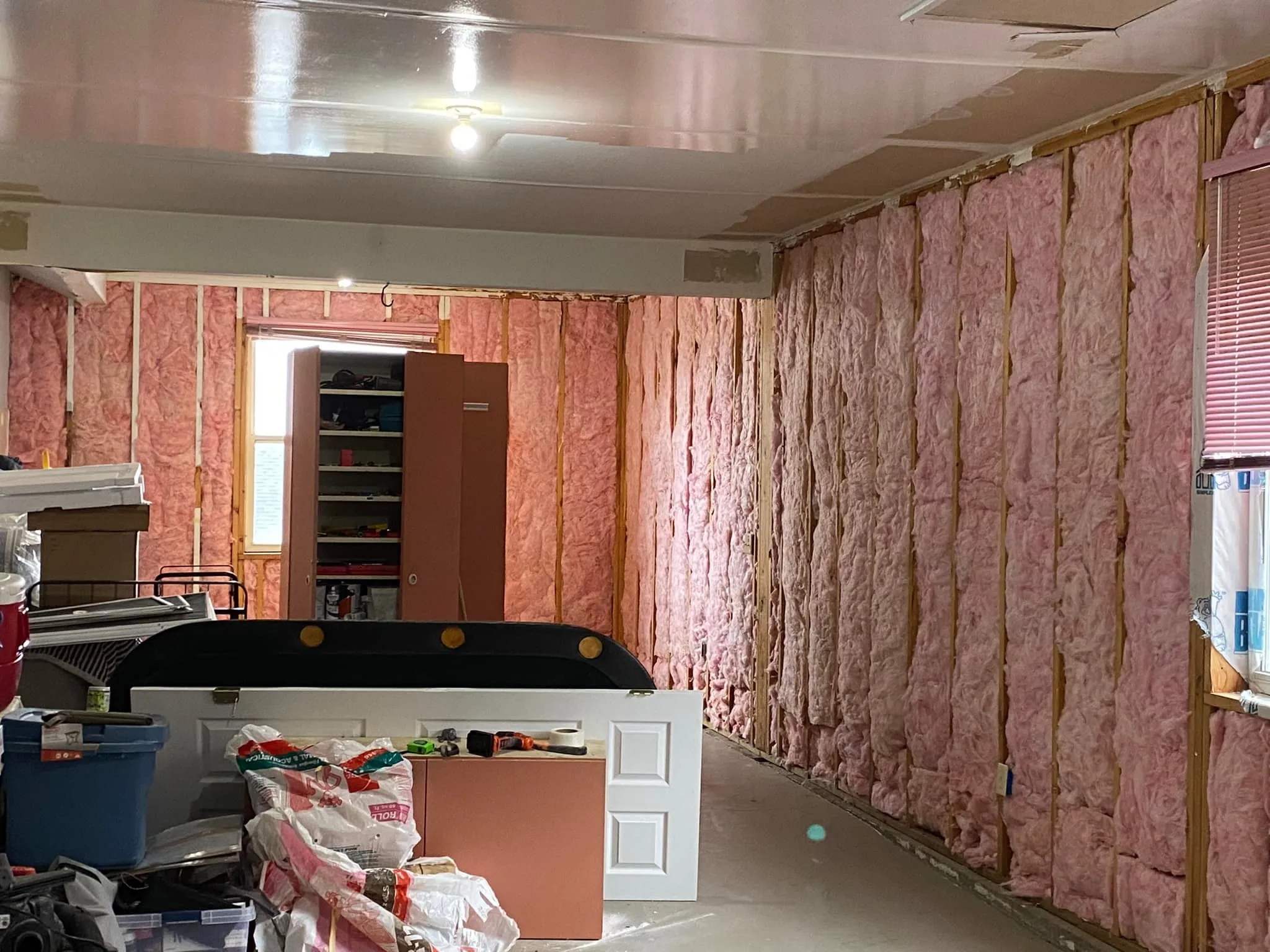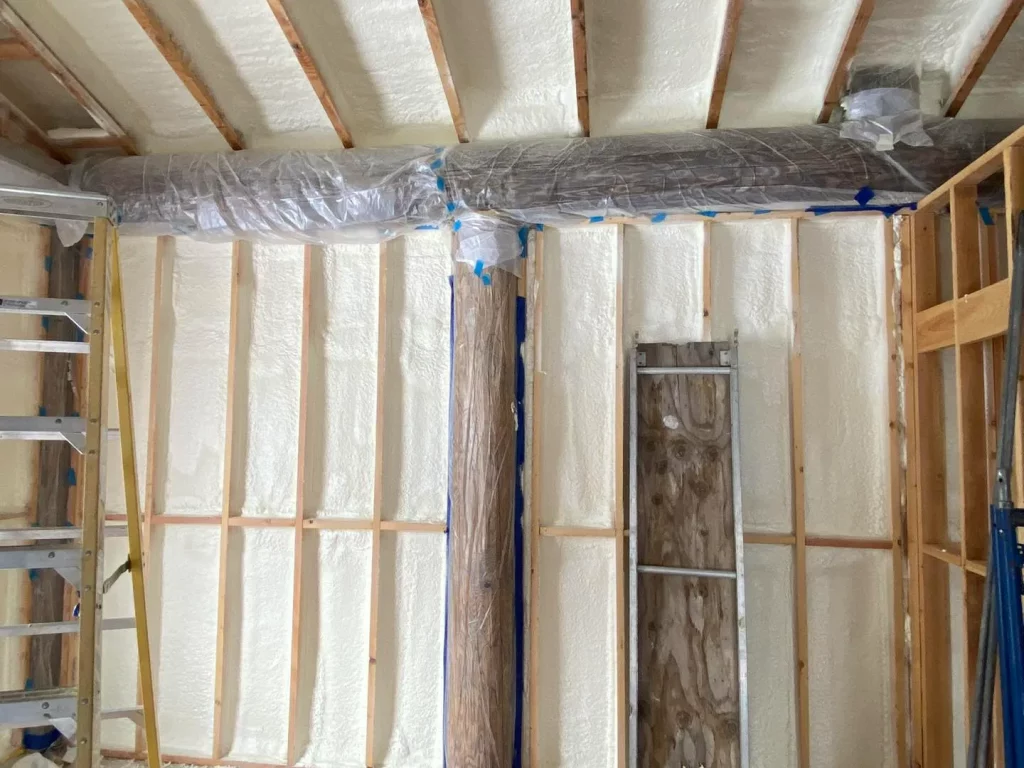
Yes, a lack of proper insulation often causes cold floors. Heat escapes through uninsulated areas, especially in floors over unheated spaces like crawlspaces or basements. This issue leaves surfaces feeling chilly underfoot, even when the rest of the room stays warm. In colder climates, this problem worsens during winter months, leading to discomfort and higher energy bills.
To help homeowners like you tackle this common issue, this article covers the reasons behind cold floors, practical steps to identify the issue, and options for addressing it. High Country Solutions draws from years of direct experience handling insulation challenges in varied home setups to share reliable details.
Insulation acts as a barrier that slows heat transfer. In floors, it prevents warmth from the living space from leaking downward. Without enough of it, cold air from below rises and cools the floor directly. This happens because concrete or wood conducts temperature changes quickly.
Homes built before the 1980s frequently lack modern insulation standards. A study from the U.S. Department of Energy notes that older structures lose up to 25% more heat through floors compared to newer ones with proper barriers. This data highlights why many people notice colder spots in legacy homes, and starting with simple checks can help pinpoint the problem.
[Image: Cross-section diagram showing heat loss through an uninsulated floor]
Bonus Tip: As part of initial troubleshooting, check for drafts around baseboards first. Simple seals with weatherstripping can make a quick difference before deeper fixes.
Cold feet signal more than just winter chill. Persistent coolness in one area points to thin insulation layers. Other clues include uneven heating where rugs stay warmer than bare spots, or spikes in heating costs without clear reasons.
Moisture buildup under floors can compound the issue. In humid areas, poor insulation traps dampness, which conducts cold more efficiently. Homeowners often find these problems during routine inspections, like when accessing a crawlspace.
These signs are widespread, as market data backs this up. The Residential Energy Consumption Survey reports that 40% of U.S. homes have inadequate floor insulation, contributing to average annual energy losses of $200 per household in northern states.
Several materials suit floor applications, each with strengths for different home types. Rigid foam boards work well for concrete slabs, offering high resistance to heat flow. Fiberglass batts fit between joists in wood-framed floors, providing even coverage.
Spray foam expands to fill gaps, sealing air leaks effectively. This type suits irregular spaces but requires professional application to avoid overexpansion.
Here’s a comparison of common floor insulation types:
| Type | R-Value per Inch | Best For | Cost Range (per sq ft) | Installation Notes |
|---|---|---|---|---|
| Fiberglass Batts | 3-4 | Wood joist floors | $0.50-$1.00 | DIY possible, but measure precisely |
| Rigid Foam Boards | 4-6 | Slab-on-grade | $0.75-$1.50 | Cut to fit, moisture barrier needed |
| Spray Foam | 6-7 | Crawlspaces, gaps | $1.00-$2.50 | Pro install recommended for evenness |
| Mineral Wool | 3-4 | Fire-prone areas | $0.80-$1.20 | Handles moisture well, heavier |
This table draws from guidelines in the International Energy Conservation Code, which sets minimum standards for residential insulation.
Bonus Tip: For homes with wood floors, consider adding insulation from below to avoid disrupting finished surfaces upstairs.
In high-elevation areas like the Rockies, extreme winters amplify insulation needs. Temperatures dropping below zero make floor coldness a daily issue. Local building codes often require higher R-values, typically R-19 or more for floors, to combat wind chill and snow cover.
Homes in these zones benefit from combining insulation with vapor barriers. This setup blocks ground moisture from rising, a common problem in snowy climates. Data from the National Renewable Energy Laboratory shows that improved floor insulation in cold regions cuts heating demands by 15-20%, based on simulations for mountainous terrains.
Additionally, regional practices include insulating over garage ceilings when floors sit above them. This prevents vehicle-stored cold from affecting living spaces.
Assess the home’s age and construction first. Older homes may need structural checks before adding insulation, as settling can create voids. Budget plays a role; basic batts cost less upfront but may require more maintenance.
Energy audits reveal exact loss points using infrared cameras. These tools show cold spots accurately, guiding targeted fixes. Long-term savings matter too—upgrading insulation pays back in 3-5 years through lower utility bills.
Consider access methods. Crawlspaces demand ventilation planning to prevent mold, while slab floors might need perimeter adjustments. Weigh DIY versus pro help based on space complexity.
Bonus Tip: Test humidity levels post-installation. Aim for 30-50% to ensure insulation performs without condensation issues.

Many homeowners wonder if cold floors mean full replacement. Often, adding insulation underneath resolves it without major overhauls.
Another frequent query involves rugs as a fix—they help temporarily but don’t address root heat loss.
Risers in multi-story homes sometimes feel colder due to air circulation. Insulation combined with fan adjustments balances temperatures better than either alone.
It addresses the main cause in most cases, but drafts or poor sealing might need separate attention. Combine methods for best results.
Expect $1.50 to $3 per square foot, depending on material and access. Larger areas lower the per-unit price.
Temporary options like area rugs or underlayment work without permanent changes. Check lease terms for any alterations.
Yes, for hard-to-reach spots, as it seals better and boosts efficiency. The upfront cost offsets with energy savings.
Feel for consistent coldness and check energy bills. A professional audit confirms thickness and gaps.
Lack of insulation directly leads to cold floors by allowing heat to escape unchecked. Identify signs early, choose materials suited to your home and climate, and consider audits for precise action. Evaluate personal comfort needs and regional demands to pick the right approach. Long-term benefits include steady warmth and reduced costs.
Homeowners dealing with persistent cold floors benefit from a detailed evaluation. High Country Solutions offers assessments tailored to specific setups. Reach out via email at [email protected] or call (307) 248-9063 to discuss options and next steps. This service helps pinpoint issues without commitment.
Major changes: Improved transitions in the introduction, integrated bonus tips more smoothly within their sections, connected signs to market data explicitly, and linked the garage insulation mention to the climate discussion.